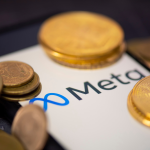CEO Bhavish Aggarwal has revealed Ola Electric’s plan to invest INR 7,600 Cr in two separate manufacturing facilities in Tamil Nadu over the next five years. The organization is striving to build an EV Hub that can be used for fabricating electric vehicles (EVs), EV parts, and batteries. They intend to bring together vendor and distributor parks as well as the necessary ecosystem for EVs in one place.
The Union government’s Production-Linked Incentive scheme is enabling an EV manufacturer to invest in an Advanced Cell Chemistry (ACC) plant and a Four-Wheel EV Plant, both located in the southern state. The investment is estimated to amount to approximately INR 5,100 Cr for the ACC and INR 2,500 Cr for the Four-Wheel EV Plant.Ola Electric is going to be pushing the boundaries of innovation by constructing two separate manufacturing plants at their existing two-wheeler facility in Tamil Nadu. The area has already been given to them by the state government, so they are all set to start operations.
Ola Electric has recently announced that its EV Hub in Tamil Nadu is set to become the world’s largest EV facility, spanning 2,000 acres across the Krishnagiri and Dharmapuri districts. This Future Factory in Krishnagiri, Hosur already produces two-wheeler EVs.
Bhavish Aggarwal, the CEO of Ola, has expressed his commitment to localize all key elements of the electric vehicle (EV) value chain. This will be done through the EV Hub which is designed to bring together multiple parts of the EV ecosystem in one place and make them accessible. By doing so, Ola will be able to strengthen their vertical integration across two-wheelers, four-wheelers, and cells.
Also Read: Tata Motors Partners with Uber to Introduce 25,000 Electric Vehicles in India
In 2020, Ola introduced their first lithium-ion battery – the NMC 2170. Backed by an investment of $500 Mn, the battery was created at their Battery Innovation Centre in Bengaluru. EV unicorn is aiming to create local supply networks for new engineering components over the period of the next ten years. These items include motors, uncommon magnets, power elements, semiconductors, lithium-ion handling and electrode formation from minerals such as Graphite and Nickel.
Ola Electric’s sales have been increasing since the end of 2020 and registered 18,220 EV registrations in January 2021, which marks a 5% increase compared to December last year when 17,346 units were recorded.
Last August, Bhavish Aggarwal declared that Ola Electric was set to venture into electric vehicles. He stated his goal of having these cars available on the roads by 2024 and confidently noted that they would be some of India’s fastest cars. Ola’s electric car has an impressive acceleration rate, reaching 0-100 kph in only 4 seconds. You can also travel up to 500 kilometres on a single charge. Additionally, its all-glass roof allows it to reduce drag with a coefficient of less than 0.21, giving maximum range with minimal drag resistance.
Also Read: Volvo Cars Malaysia targets 75% electric vehicle sales in local market by 2025
During this uncertain time, the Ola group of companies has been restructuring in order to emphasize non-software engineering fields while trying to reduce costs. In September 2022, the organization chose to let go 200 staff members whose roles were in software development, while announcing plans to recruit 3,000 people for positions other than software-related.

















